Unfortunately, Giant Pandas are a highly endangered species. One heritage site and reserve in China, however, safely holds more than 30% of the world’s panda population. These beautiful bears have more than 2 million acres there to roam, snack and play.
It is also the most important breeding site for pandas in captivity, with 7 nature reserves, 9 scenic parks and the Wolong National Nature Reserve, which alone is home to more than 150 giant pandas.
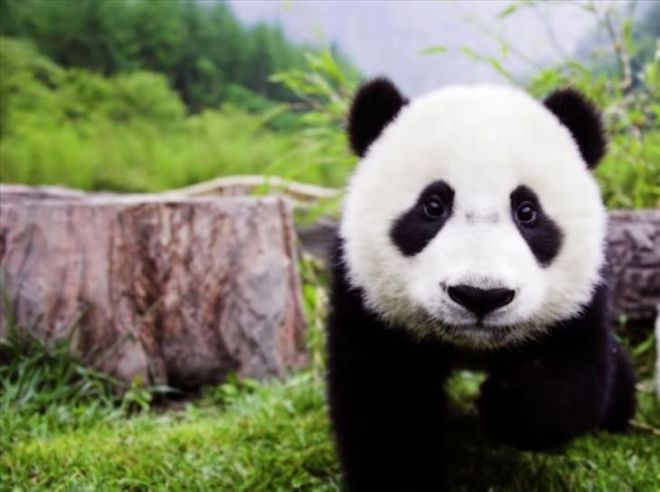
The world heritage site in China covers more than 2,284,489 acres, home to the 150 pandas we mentioned. This adorable giant panda cub is one of them.
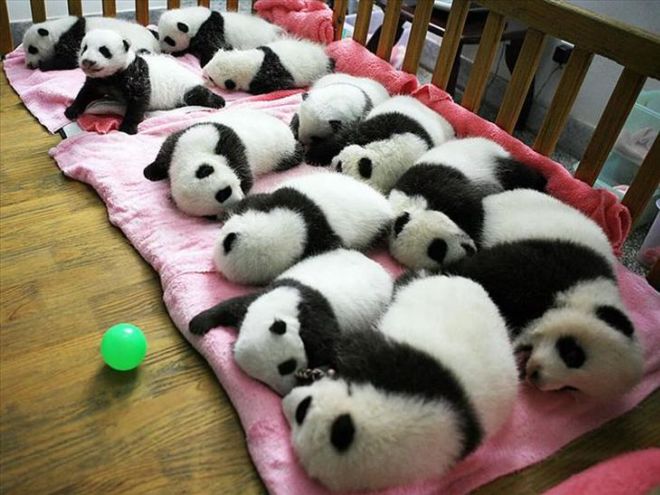
A dozen panda cubs in a crib. The Sichuan Giant Panda Sanctuary has one of the most significant breeding sites for giant pandas, which are infamous for being difficult breeders in captivity.
A panda baby is born pink, blind and without any teeth. After a few weeks, the skin will turn gray, and by the time a month passes, the cubs are covered in the well known (and extremely fluffy) black and white fur. A panda cub will weigh about 100 pounds (45 kilos) by the time it is one year old.

16 pandas at the Wolong National Nature Reserve, a part of the Sichuan Giant Panda Sanctuaries. Some claim that of 1,600 or so giant pandas left in the world, more than 300 are in zoos, breeding centers, and research institutes. Most of the pandas still in the wild live in China.
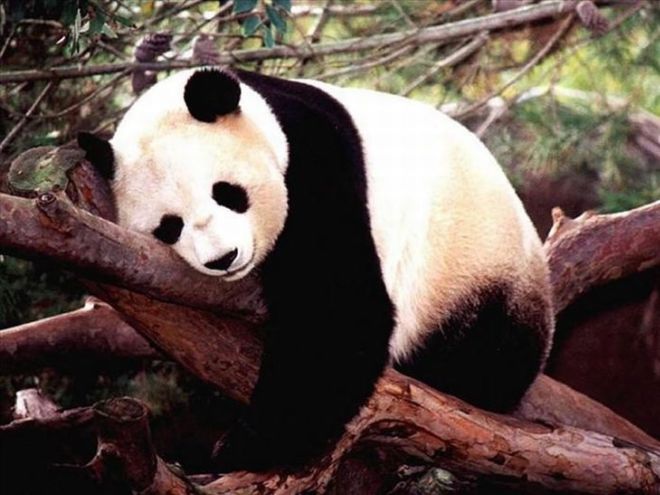
It’s hard to be a panda. A panda taking one of their many naps of the day.
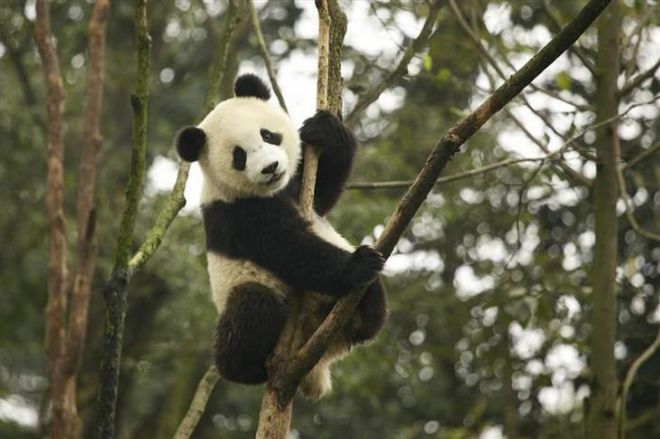
Frisky youngling hanging out on trees. Panda cubs start climbing trees when they are no older than six months old.
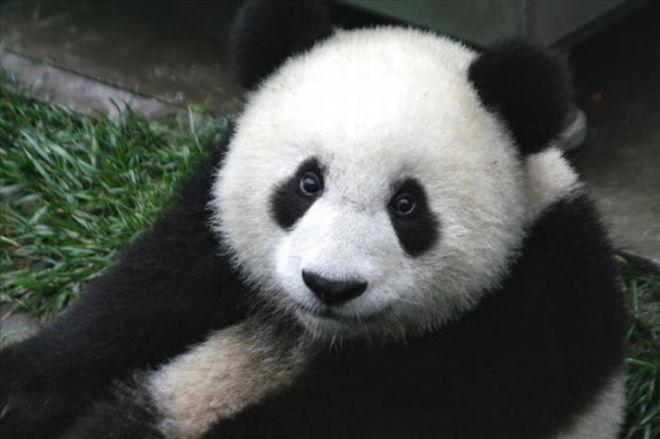
Up close and personal with a 7-month-old panda at the Wolong Nature Reserve.

Now we’re getting to 17 panda cubs in one photo! That must be the greatest place to be for fluff lovers.
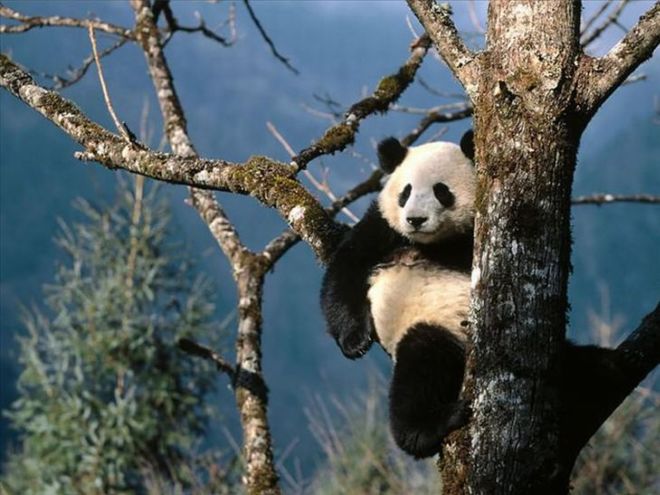
Trees are the La-Z-Boy of the panda world.

Playful panda at the Chengdu Research Base, which studies how giant pandas breed.

Mommy panda holding her little baby protectively at the research center.
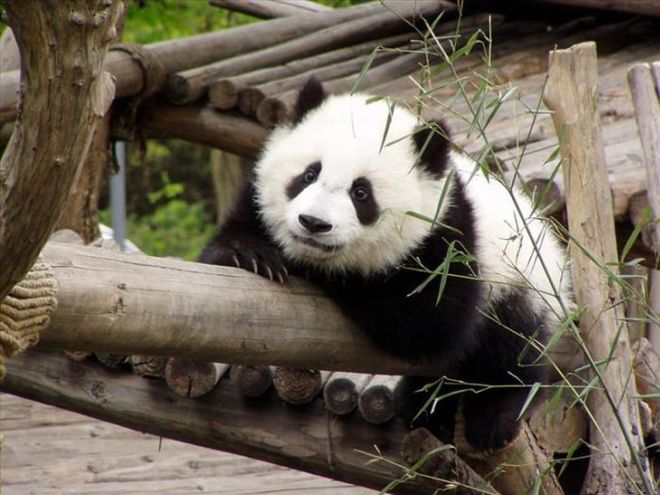
The giant panda has a very large paw with 5 fingers and an added ‘thumb’ for climbing and holding on to bamboo while eating.
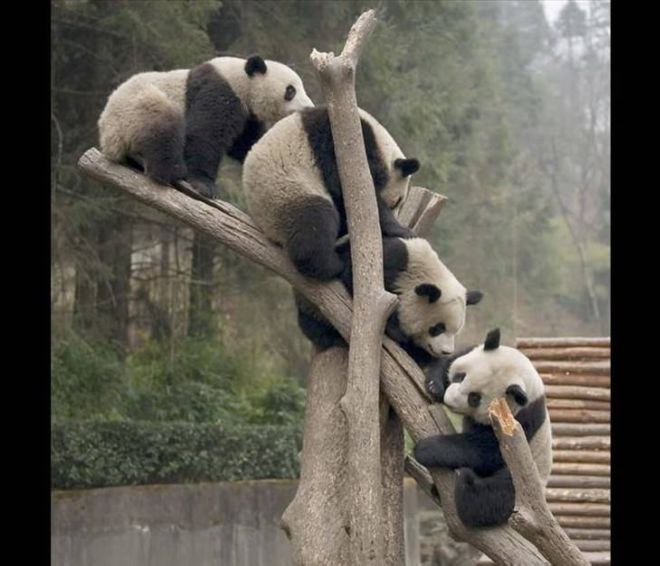
It’s nice to share. 4 Pandas sharing a tree to climb on at Wolong National Nature Reserve.
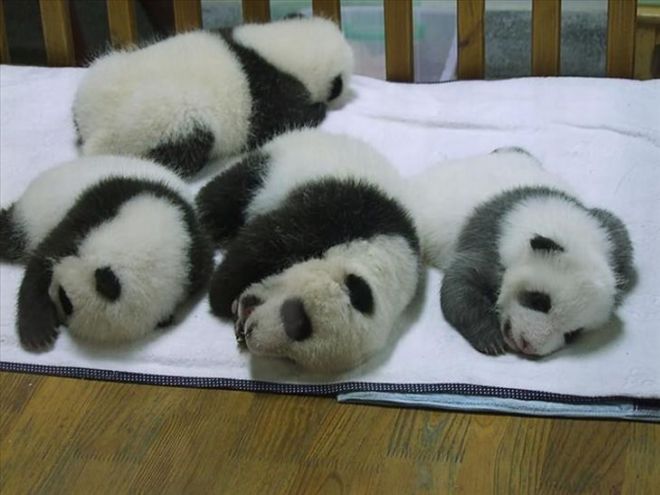
Baby pandas weigh about 100-200 grams (3.5 to 7 ounces) at birth and are about 15-17 cm (6-7 inch) long.


Cuddling pandas at Wolong Nature Reserve.
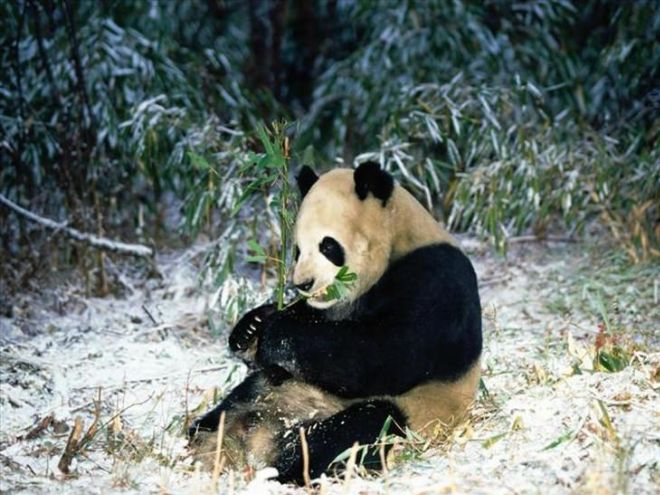
The average panda can eat as much as 9-14 kg (20-30 pounds) of bamboo shoots every single day.
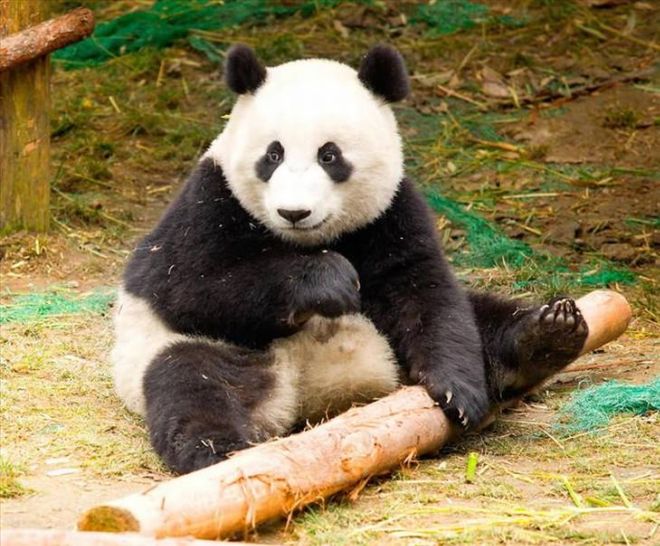
A young panda. As they become adults, pandas may measure about 1.2-1.8 meters (4-6 feet) long, including the tail.
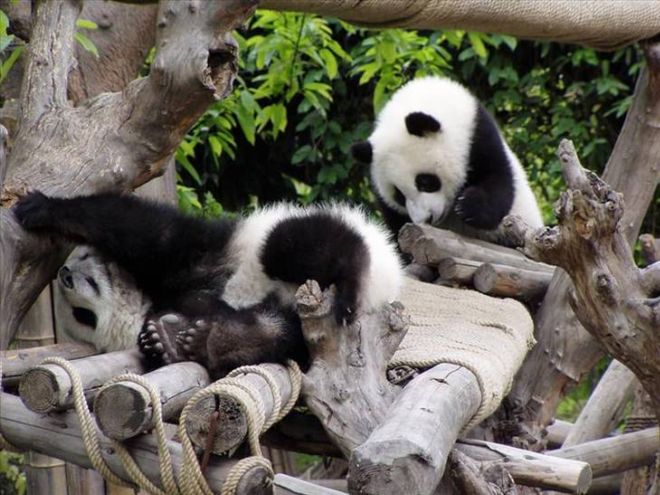
Lazy play time for young panda.
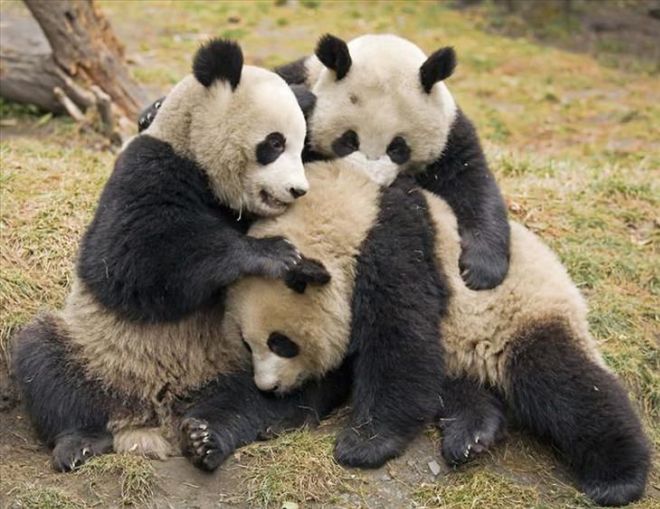
Three ‘teen’ pandas at Wolong. The average panda’s weight is about 100-115 kg (220-250 pounds) while male pandas may achieve a weight of up to 160 kg (350 pounds). The weight of female pandas varies between 70-100 kg (170-220 pounds).
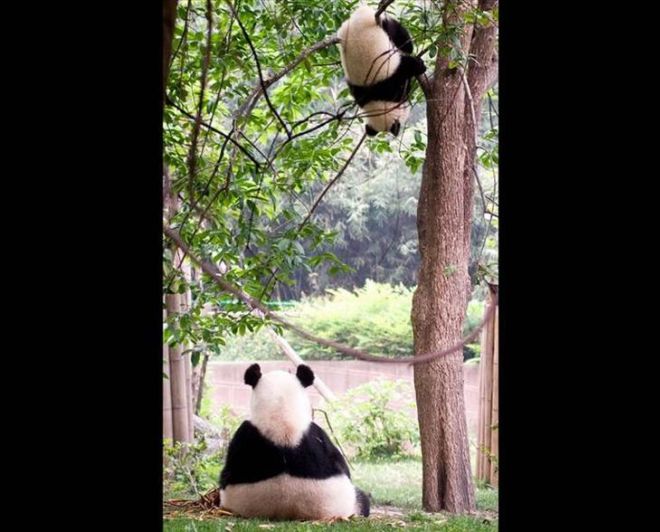
One sees the world one way, the other sees it upside down.
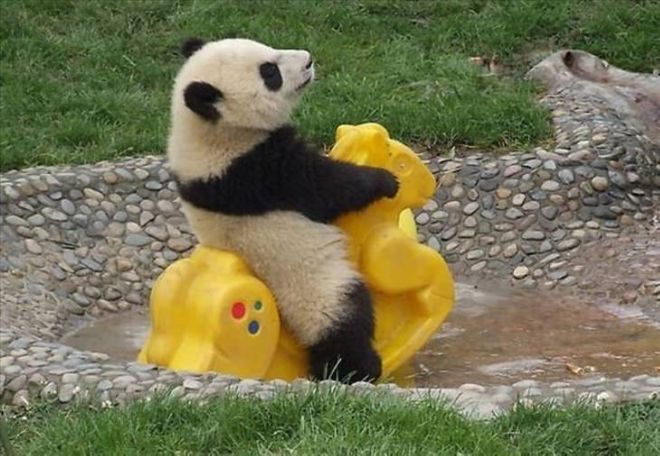
Baby panda enjoys a ride just like a human kid.

A 20-year-old panda enjoying an apple snack. Pandas, on average, live to about 20 years in the wild and about 30 in captivity, making this quite the mature panda.

The panda used to live in the lowlands. However, due to farming and deforestation, among other developments, they have lost these habitats of old.
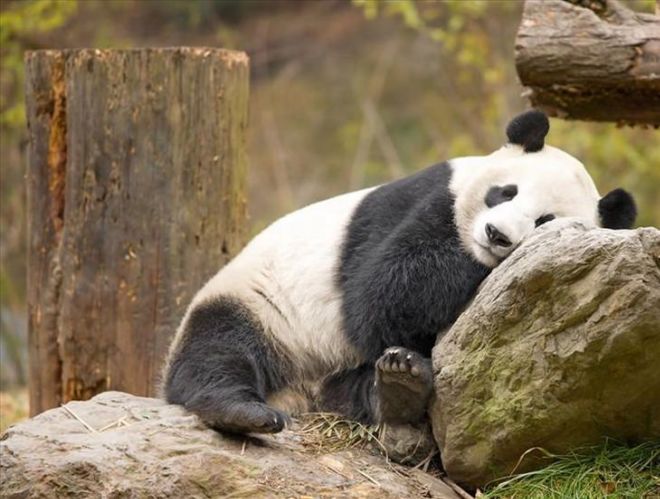
Looks uncomfortable, but the panda is intent on getting its nap.
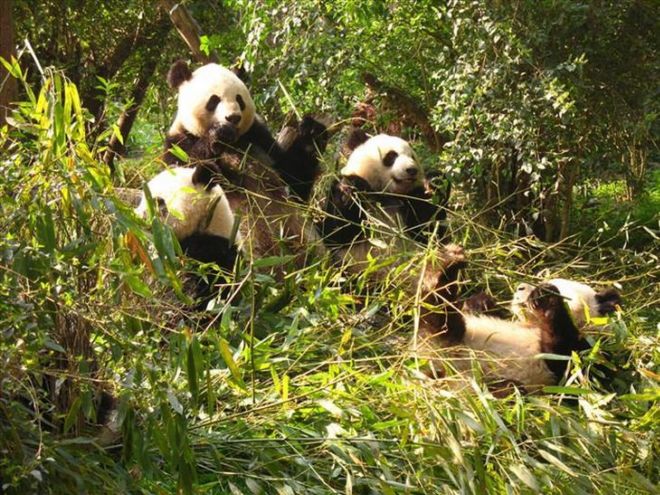
Eating and playing at Sichuan Sanctuary.

Cubs taking a group nap. Initially the primary method of breeding giant pandas in captivity was by artificial insemination, as they seemed to lose their interest in mating once they were captured.
This led some scientists to try extreme methods such as showing them videos of giant pandas mating and giving the males Viagra. Only recently have researchers started having success with captive breeding programs.
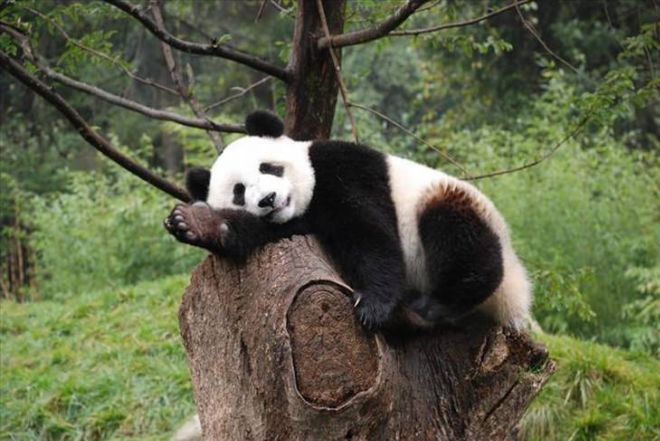
Strike a pose, Mr. Panda!
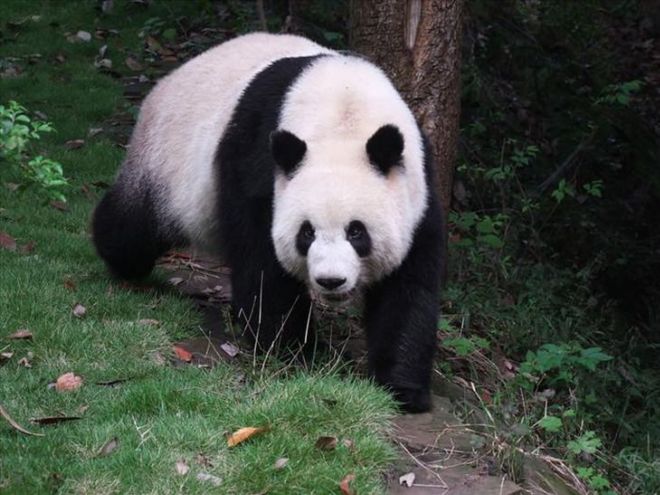
Scientists believe the panda first appeared in its present black and white form about 2-3 million years ago.

It was in 1869 when a French missionary, Armand David, who had come to China to spread Christianity, first revealed to the outer world the creature known as the panda bear.
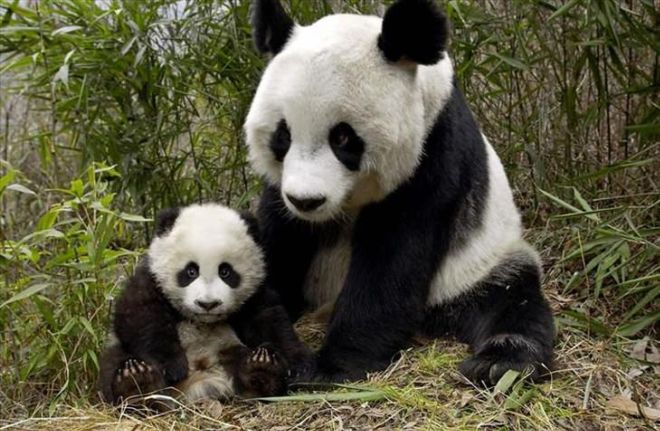
A mother and cub are a common pairing at the Sichuan Sanctuaries.
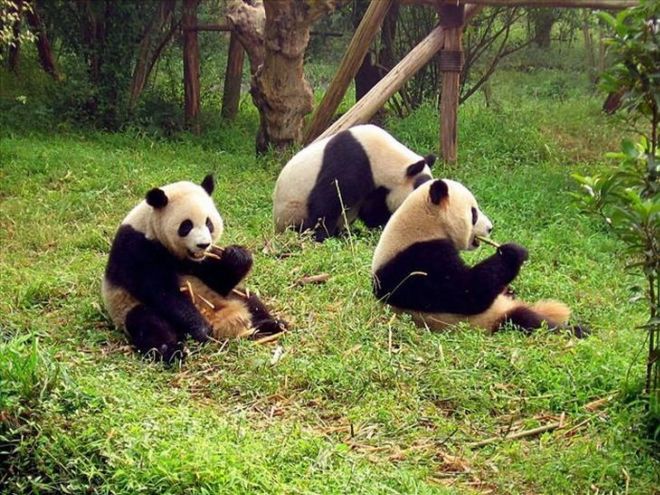
The scientific name of the panda is Ailuropoda melanoleuca, which means ‘black and white cat-footed animal’. Not a very apt description. These three cat-footed animals are munching on some bamboo.
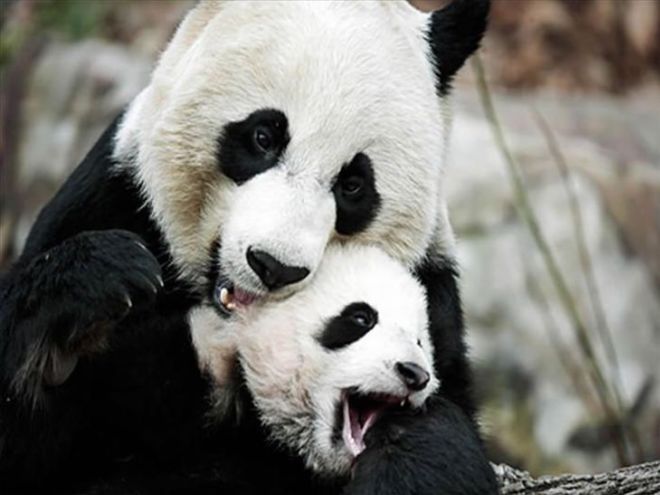
Pandas snuggling and playing at Wolong. The pregnancy of a panda is about 95-160 days following mating. In the wild, only one of the 2 panda cubs will usually survive, and they stay with their mothers for up to 3 years time, which means a female wild panda usually raises only 5-8 children in her lifetime.
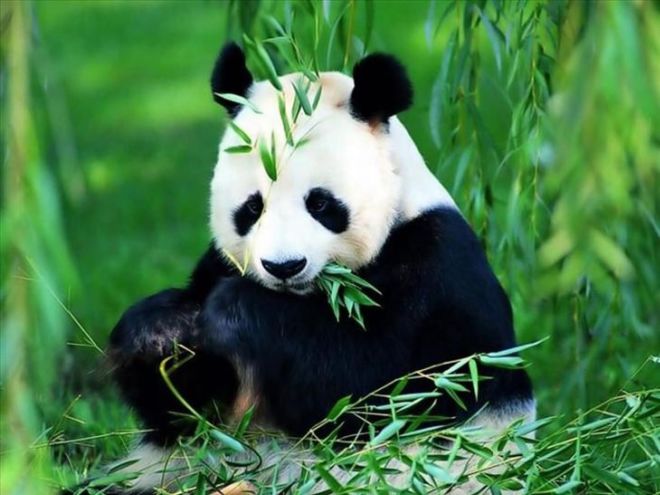
A panda will always sit or lie down to eat. Most wild pandas spend all day feeding, sleeping or looking for food. However, unlike other bears from the same kind of climates, they do not hibernate in winter.

A shy baby panda.
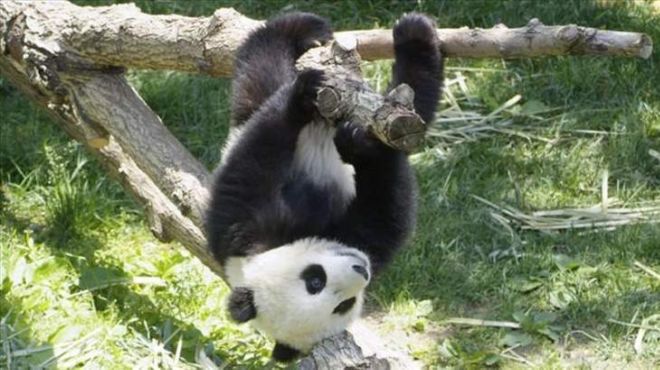
Hanging out at Wolong nature reserve.
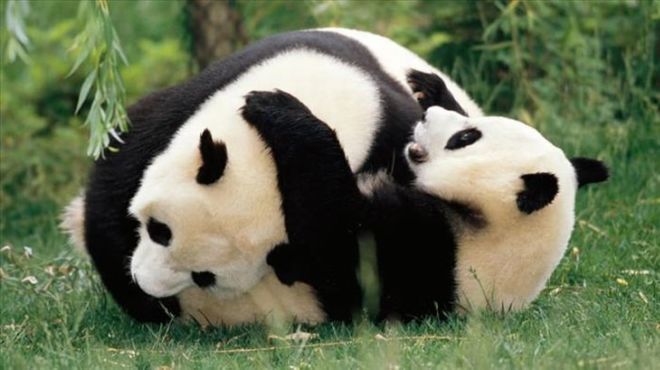
Conservation of the panda species began in the 1940s in China, while Wolong reserve was created in 1963.
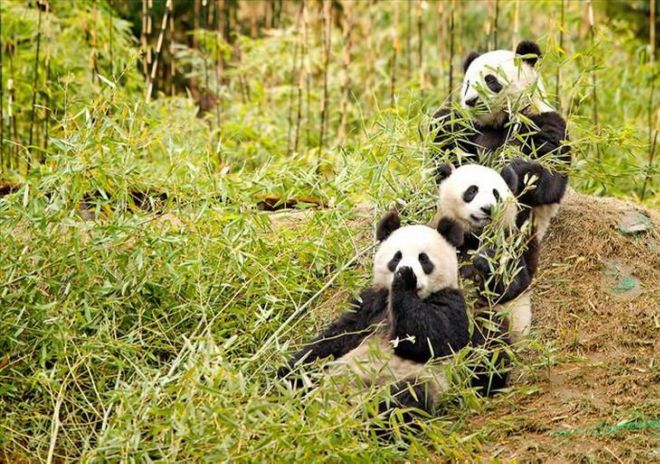
Pandas are the most expensive animal by far for zoos, up to 5 times more than an elephant, the next most expensive animal. American zoos pay the Chinese government $1 million every year to ‘lease’ the pandas. Otherwise, they will go back to China.
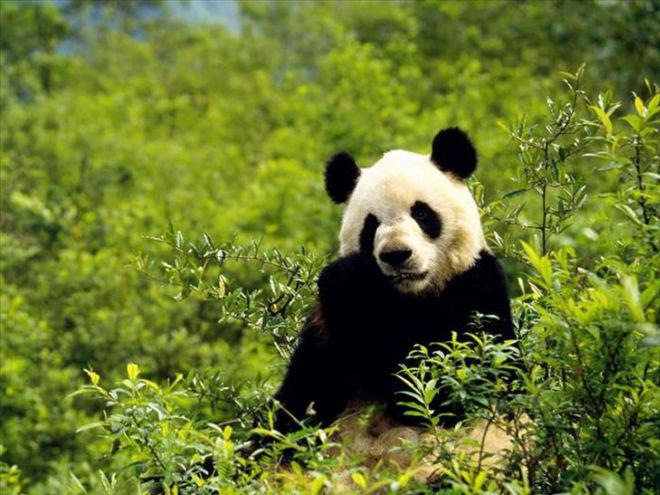
Although pandas may congregate in groups of up to 28 individuals, they are mostly solitary creatures, which may explain their calmness. There’s lots of time for zen.





